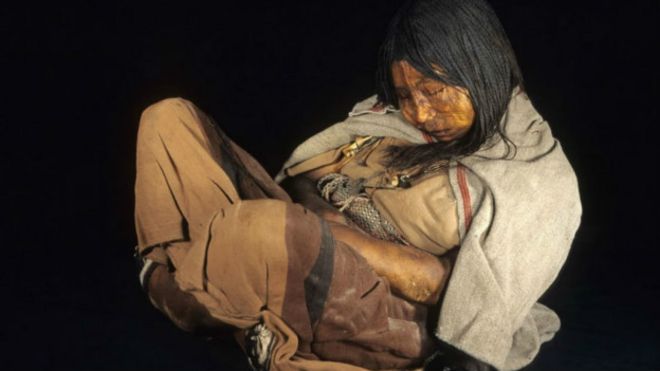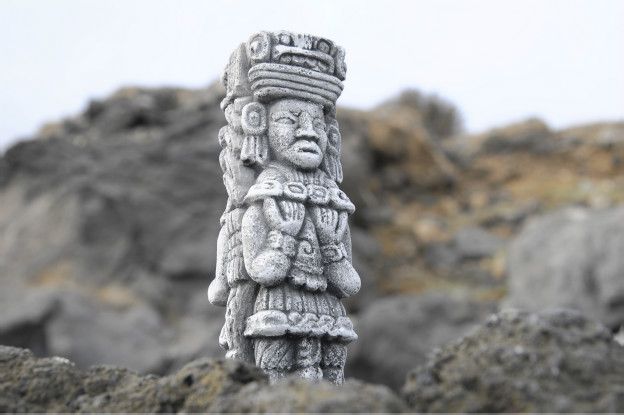Two questions that the scientific community has asked for decades about first inhabitants of the Americas are: how they spread throughout the continent? and what was the real impact of the arrival of the European conquerors on the populations?

Inca mummy found on Mount Llullaillaco in Argentina in 1999, was used in the study. Johan Reinhard
Image credit.
Image credit.
Now, a genetic study from DNA samples taken from 92 mummies and skeletons of pre-Columbian times mostly from Chile, Bolivia and Peru provides clues to answer both questions.
DNA reveals secrets of first inhabitants in America
The study, whose results were published in an article in the journal of Science Advances, was based on the study of mitochondrial DNA-the passing from mothers to children-of these individuals who lived between 8600 years and 500 years ago, which was compared with current populations of those countries.
That DNA was extracted from samples of hair, teeth and bones ofmummies and skeletons.

Of the 84 genetic lineages found in human remains we analyzed, none managed to survive in today’s indigenous populations. Thinkstock Image credit.
According to the findings of the study, the effects of the arrival of Europeans on the original indigenous population were devastating: of the 84 genetic lineages found in human remains that were analyzed, none managed to survive in today’s indigenous populations.
That, according to scientists, argue in part the theory that a large proportion of indigenous inhabitants of America disappeared after the arrival of the Spanish conquistadors, due to factors such as disease brought from the old continent, war and the collapse of societies Pre-Columbian.
However, to better determine the causes of the disappearance of these indigenous populations is still work in progress, including extraction and study of nuclear DNA from the mummies.

Archaeologists excavate the site of Huaca Pucllana in Lima. Image credit / Getty
Bastien Llamas, one of the principal investigators, recognized the that the study of mitochondrial DNA “only see a part of history,” which extends from mother to child.
This naturally tends to disappear whenever a woman has no children or only have sons.
The study of nuclear DNA, however, provides information both in maternal and paternal line and can help us understand the impact of the arrival with these colonizers.
The study also provides more precise data about the arrival of the first inhabitants of the continent through the Bering Strait, connecting Asia with the northwestern part of North America during the last ice age.
“Our genetic reconstruction confirms that the first Americans came about 16,000 years ago by the Pacific coast,” said Alan Cooper, director of Australian Centre on ancient DNA from the University of Adelaide, who led the study.
Progress towards the south of the continent had been made in a period of about 1,500 years.
“They spread south fairly quickly, reaching Chile about 14,600 years ago,” Cooper said in a press release issued by the ACAD.
“They spread south fairly quickly, reaching Chile about 14,600 years ago,” Cooper said in a press release issued by the ACAD.
“Our study is the first genetic real-time recording of these key issues related to the process of peopling of the Americas,” he told Science magazine Wolfgang Haak, scientist at the Max Planck Institute for the Science of Human History and one of the research participants.
“To have a more complete picture, however, we need a concerted effort to build a comprehensive database of the DNA of the present inhabitants and their pre-Columbian ancestors,” said the expert.
92 pre-Columbian mummies and skeletons were used in the study.

No comments:
Post a Comment